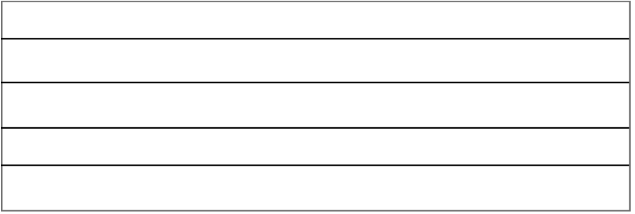Chapter 1. Garden Path
1.1 Introduction
Garden Path
Reading is a complicated task, though most of us do it with great ease. Thinking back on what learning to read in school was like, however, we know that reading is not as easy as it seems. It is an important cognitive activity to study.
In this task you will be asked to read a few passages of text. You will need to move your mouse to reveal the words of the passage. After each passage, you will be asked a couple of questions to see what you understood in the passage.
1.2 Experiment Setup

1.3 Instructions
Instructions
You will be asked to read a short passage and then to answer two questions about that passage. When the screen first comes up, you will see a rectangle with horizontal lines, as shown below.

The passage you are to read is hidden under the lines. To read the passage, move your mouse over the white areas between the lines; this will cause the words of the passage will be revealed one at a time, as shown in the diagram below.

Move your mouse over all the lines to reveal all the words so you can read the entire passage. You can move your mouse wherever you wish, including moving it back to reveal words you missed before. After you have read the passage, press the Continue button to answer two questions about the passage. You will be given several trials each with a different passage.
1.4 Experiment
Begin Experiment

1.5 Results
Results

1.6 Debriefing
Debriefing
As stated in the introduction, the ease with which most of us can read is deceptive, because reading is actually a very complex skill. We need subtle research methods to understand what enables us to read. One important technical advance in the study of reading is the ability to track eye movements. Only a very small region of the back of the eye, the fovea portion of the retina, can see sufficiently small details to allow us to read. The ability to see small details is called acuity. The small size of the fovea and its acuity is why you have to “look at” someone or something. When you look at someone, you put the image of that person’s face on your fovea. We have to move the fovea across a page to be able to pick up sufficient details from words to be able to read. We can determine the point of focus in reading by determining what part of the word falls on the fovea. With eye-tracking technology, it is possible to follow a reader as he or she reads. We cannot track your eyes across the web. So to replicate the classic experiment by Carpenter and Daneman (1981) that used eye tracking, the computer tracks where your mouse is and reveals the word under the mouse, thus filling the function of the eye tracking device. The experiment times how long you looked at the target word and those words that help you figure out the meaning of the target words.
It is a bit of a truism that words have more than one meaning. We use the words around the word we are trying to understand to determine which meaning is used in a given passage of text. In this experiment, the passages were very carefully constructed, as shown below.
The young man turned his back on the rock concert stage and looked across the resort lake.
First sentence always the same
Tomorrow was the annual one-day fishing contest and fishermen would invade the place.
Context sentence that leads you to think the target word has one or another meaning
Some of the best bass guitarists in the country would come to this spot.
The word in bold is the target word. In this case it could mean a fish or a musical instrument. The word in italics is the disambiguating word that tells you exactly what the target word means. It can agree or disagree with the context sentence.
The usual routine of the fishing resort would be disrupted by the festivities.
Last sentence always the same.
If the context and the disambiguating word disagree, you often look longer at the disambiguating word and often look back at the word itself. You use the context to help you determine what a word means; if the context is not helpful, you have to work harder to figure out the meaning of the word.
References:
Carpenter, P. A., & Daneman, M. (1981). Lexical retrieval and error recovery in reading: A model based on eye fixations. Journal of Verbal Learning and Verbal Behavior, 20(2), 137-160.
Rayner, K. (1998). Eye movements in reading and information processing: 20 years of research. Psychological Bulletin, 124(3), 372-422.
1.7 Quiz
Quiz